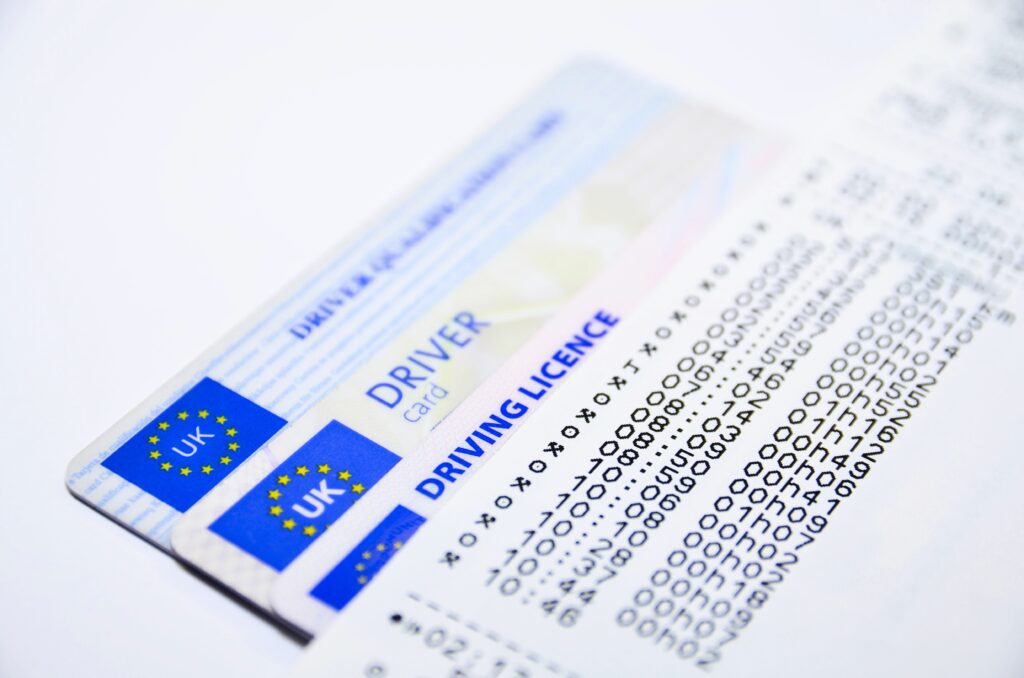Table of Contents
When beginning your HGV training, trying to understand the differences between manual and digital tachograph cards may seem confusing at first.
Today digital cards are the norm, but manual cards may still pop up from time to time.
Both cards allow drivers to record information, such as miles driven on a shift, but what’s the difference between the two?
Read on to learn more.

What is a tachograph card?
A tachograph card is paramount in ensuring the safety of HGV drivers and others on the road. It allows domestic driver’s hours rules and weekly rest periods to be monitored and adhered to. Drivers can either use digital printout paper records or an analogue tachograph record sheet, usually depending on the vehicle.
Which digital tachograph card is only available to enforcement authorities?
A control card is a type of digital tachograph card which is only available to enforcement authorities such as the Driver & Vehicle Agency (DVA) and the police. Control cards can be used to carry out any necessary checks. An example of this might be making sure drivers are complying with working hours rules.

What is a digital tachograph card?
A digital tachograph card is considered current HGV industry standard. These cards can store data, including driver activities like rest breaks. Sometimes they’re called smart tachograph cards.
Similarly to a driver’s licence, a digital tachograph card, also known as a driver’s card, contains information personal to each driver, such as their name, date of birth, expiry date of the card, and a passport style photograph of the driver.
Digital tachograph cards are deemed generally more accurate than manual cards. This is due to reduced tampering risks and being less susceptible to human errors during manual entry, as they record information automatically.

How to use a digital tachograph
Cards can be checked at the beginning of a shift by another staff member. The driver then inserts their digital card into the tachograph to record information. The driver will have three options to work from: availability, break/rest and other (for example, loading or unloading goods). The digital card automatically records data and stores it onto the driver’s smart ID card.
The tachograph card can only be removed at the end of the shift, by law.
How much is a digital tachograph card?
A digital driver card costs £32 initially, with a renewal fee of £19 every five years.

Can I drive an HGV without a digital tachograph card?
It is legally required that HGV drivers use a tachograph card. But in circumstances where a tachograph card has been lost, stolen, broken, or damaged, drivers can drive without a tachograph card for 15 days or longer if necessary.
In these circumstances, drivers must prove that they cannot use their card and must keep Vehicle Unit (VU) records. These records are important if drivers are stopped by enforcement such as the police or Driver & Vehicle Agency (DVA). Generally, new cards are issued within five days of receiving an application.
While manual cards are still accepted, they are less common, as all HGV vehicles require a digital card due to EU regulations (as of 2006), although analogue tachographs are still in use in some older vehicles.

What is a manual tachograph card?
Manual tachograph cards were industry standard up until around 20 years ago, which have become slowly phased out since 2006. They’re sometimes referred to as analogue tachograph cards. Manual cards use wax-coated paper discs which are inserted into the vehicle to record information. However, manual cards can be more prone to error than digital and are also easier to tamper with.
How to use a manual tachograph card
The analogue tachograph card requires manual entry from the driver. They write their details onto the wax-coated paper disc. Once completed, the driver can insert their card into the tachograph and begin their shift. The card records the vehicle’s speed, distance travelled and driver’s activity, by using a stylus to mark the paper.
At the end of the shift, the manual card needs to be removed by the driver and given to a supervisor or admin, for the information to be recorded properly.

Ready to start your career as an HGV driver?
HGV Training Network is here to guide you through the start of your career and beyond! For more information regarding the CPC course, the team is available to support you through your training.
Have any questions?
If you have any more questions regarding HGV Training Network or a career in driving, you can get in touch with one of our friendly experts.








